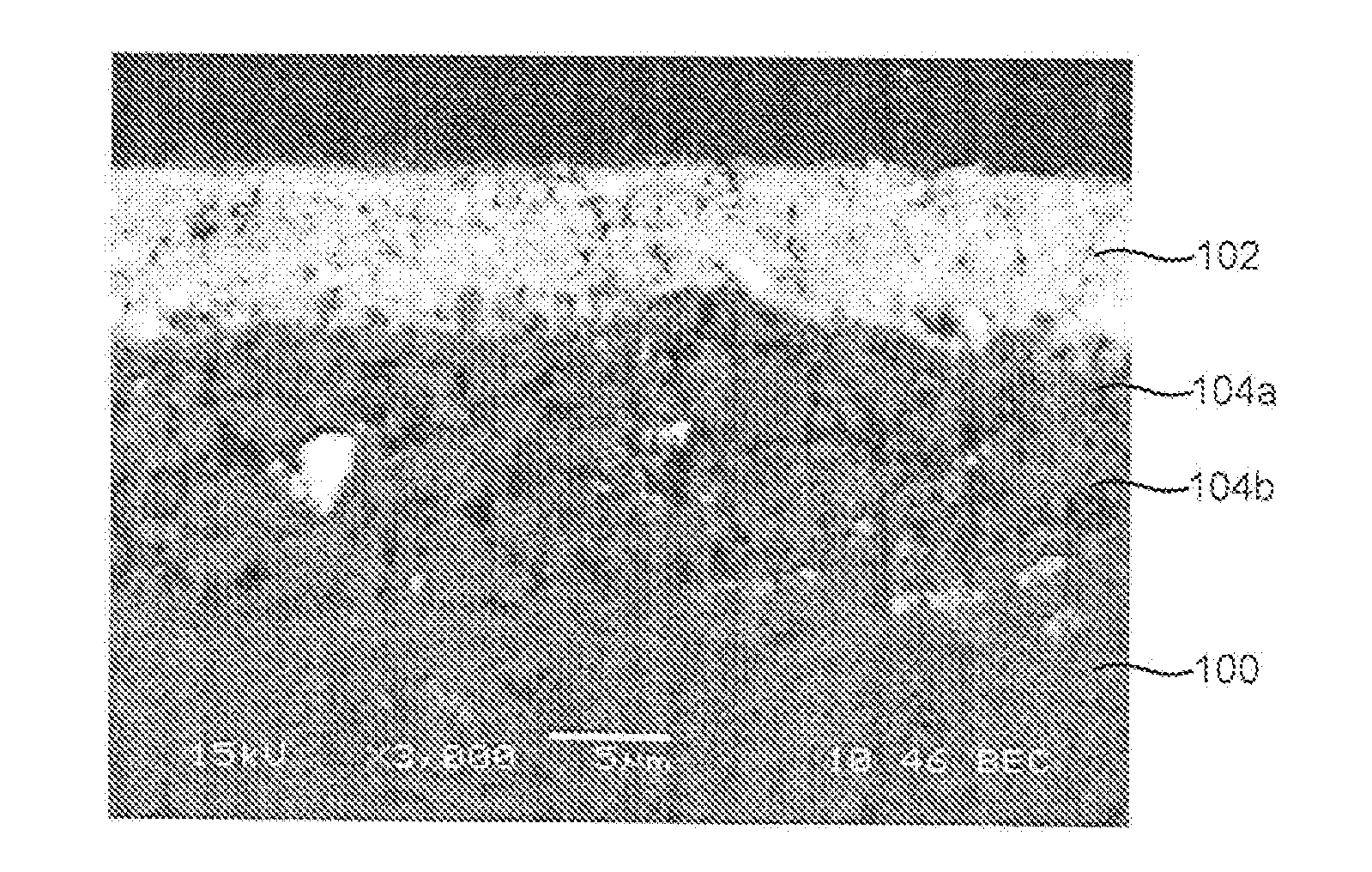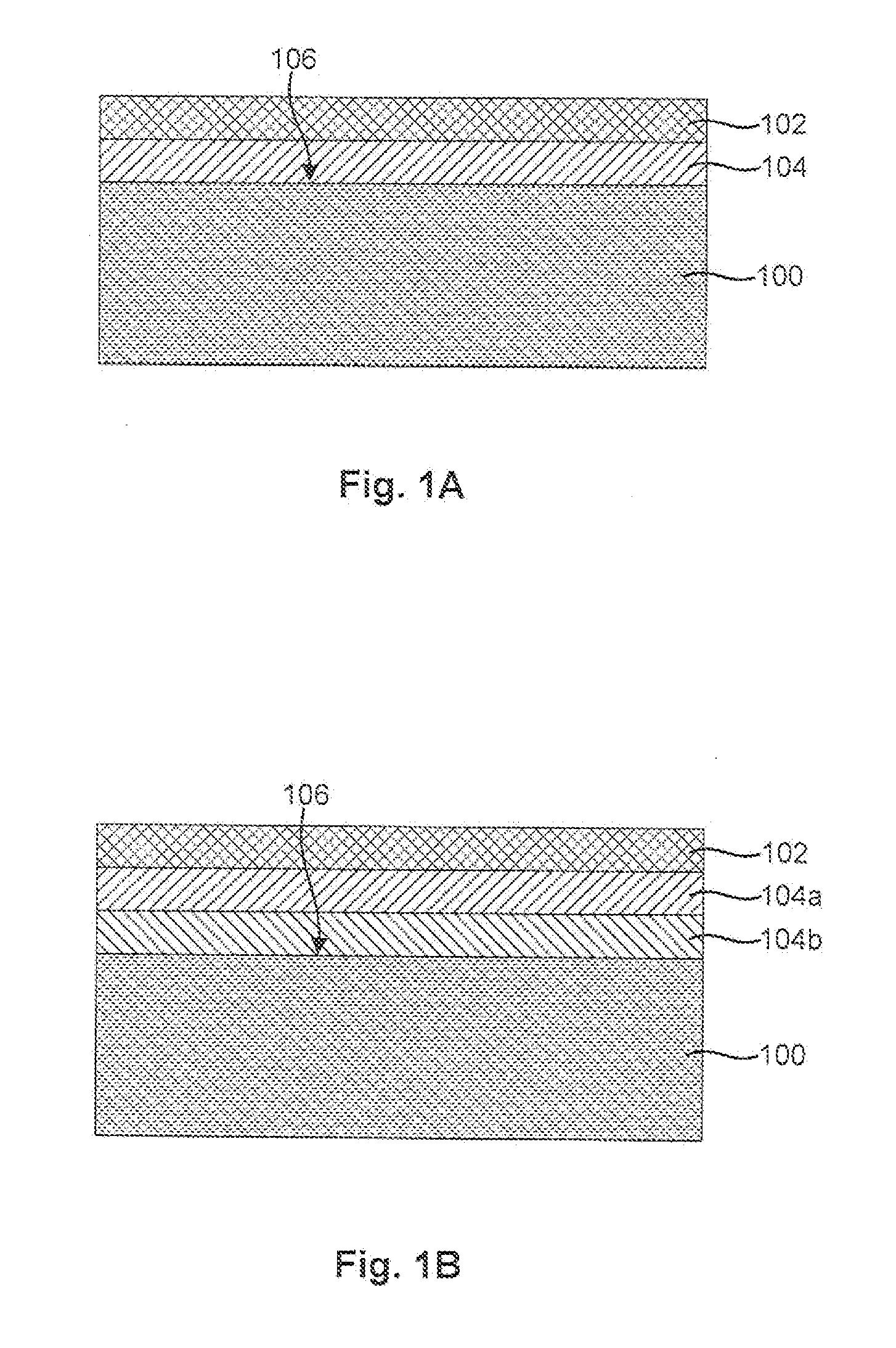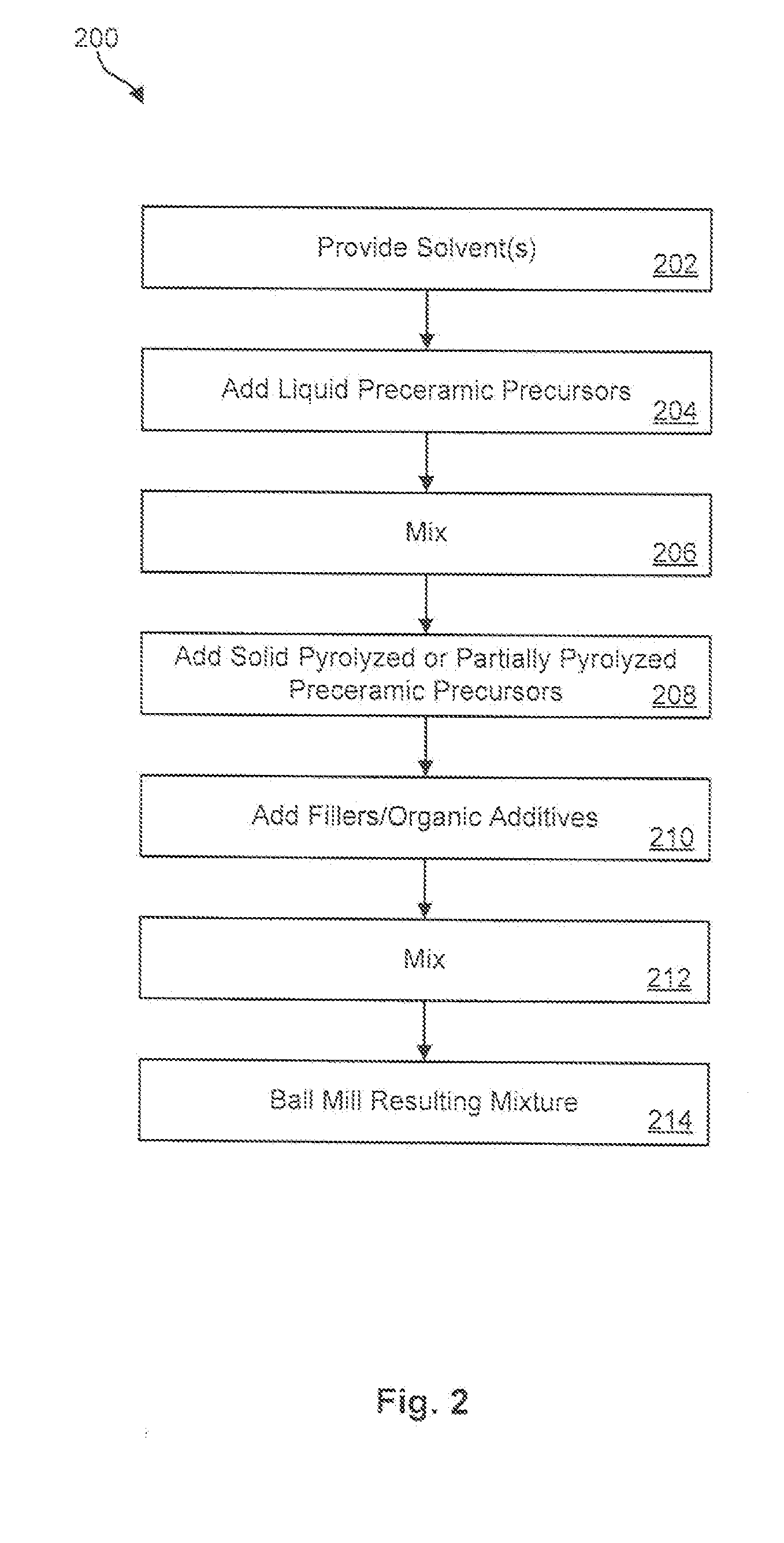Aluminosilicate-Based Oxide Composite Coating and Bond Coat for Silicon-Based Ceramic Substrates
a technology of silicon-based ceramics and composite coatings, applied in the direction of ceramic layered products, water-setting substance layered products, transportation and packaging, etc., can solve the problems of high-temperature water vapor rapid corrosion of materials, large coefficients of thermal expansion (cte) of underlying substrates, and unstable materials, etc., to reduce shrinkage of bond coats, promote adhesion, and increase the volume of bond coats
- Summary
- Abstract
- Description
- Claims
- Application Information
AI Technical Summary
Benefits of technology
Problems solved by technology
Method used
Image
Examples
example 1
[0070]In a first example, two bond coat slips were prepared to create an EBC with multiple bond coats. A first bond coat slip was produced by providing 50 grams of solvent comprising seventy percent by weight toluene and thirty percent by weight MEK. Liquid aHPCS in the amount of 8.56 grams was then added to the solvent and the resulting mixture was shaken by hand for two minutes. Solid aHPCS pyrolyzed at 1150° C. in the amount of 34.25 grams, silicon nitride in the amount of 31.19 grams, and zirconia media in the amount of approximately 200 grams were then added to the mixture and the resulting mixture was mixed with a paint shaker for five minutes. The resulting mixture was then processed by a ball mill for about twenty-four hours.
[0071]A second bond coat slip was produced by providing 25.75 grams of solvent comprising seventy percent by weight toluene and thirty percent by weight MEK. Liquid aHPCS in the amount of 2.73 grams was then added to the solvent and the resulting mixture...
example 2
[0072]In a second example, a single bond coat slip was prepared to create an EBC with a single bond coat. The bond coat slip was produced by providing 33.39 grams of solvent comprising seventy percent by weight toluene and thirty percent by weight MEK. Liquid aHPCS in the amount of 6.67 grams was then added to the solvent and the resulting mixture was shaken by hand for two minutes. Solid aHPCS pyrolyzed at 1150° C. in the amount 17.76 grams, silicon nitride in the amount of 14.66 grams, top coat material (i.e., anorthite+alumina) in the amount of 13.05 grams, and zirconia media in the amount of approximately 200 grams were then added to the mixture and the resulting mixture was mixed with a paint shaker for five minutes. The resulting mixture was then processed by a ball mill for about twenty-four hours.
example 3
[0073]In a third example, an EBC comprising a top coat and two bond coats was applied to a silicon nitride substrate using the bond coat slips prepared in Example 1. The edges and corners of a block-shaped silicon nitride substrate were initially rounded and the substrate cleaned with acetone. The substrate was then dip coated with the first bond coat slip with a pull out speed of two to three inches per minute. The slip was then allowed to dry overnight. The coated substrate was then fired in a tube furnace with flowing argon gas with the following schedule: 45° C. / hour to 200° C. and then hold for 5 minutes, 60° C. / hour to 400° C. and then hold for 1 hour, 30° C. / hour to 600° C. and then hold for 30 minutes, 30° C. / hour to 850° C. and then hold for 1 hour, 30° C. / hour to 1150° C. and then hold for 4 hours, and 120° C. / hour down to 30° C.
[0074]The coated substrate was then dip coated in the second bond coat slip with a pull out speed of two to three inches per minute. The coated su...
PUM
| Property | Measurement | Unit |
|---|---|---|
| Temperature | aaaaa | aaaaa |
| Particle size | aaaaa | aaaaa |
| Rheological properties | aaaaa | aaaaa |
Abstract
Description
Claims
Application Information
 Login to View More
Login to View More - R&D
- Intellectual Property
- Life Sciences
- Materials
- Tech Scout
- Unparalleled Data Quality
- Higher Quality Content
- 60% Fewer Hallucinations
Browse by: Latest US Patents, China's latest patents, Technical Efficacy Thesaurus, Application Domain, Technology Topic, Popular Technical Reports.
© 2025 PatSnap. All rights reserved.Legal|Privacy policy|Modern Slavery Act Transparency Statement|Sitemap|About US| Contact US: help@patsnap.com



